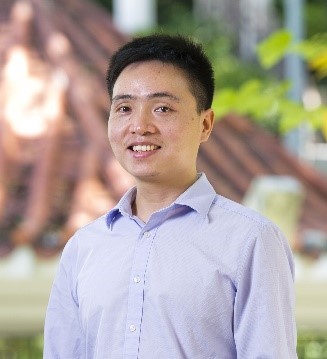- 学术动态
报告题目: Structural Engineering of Layered Nanomaterials by Lithium Intercalation Chemistry
报 告 人:香港城市大学 谭超良 教授
报告时间:2022年01月07日(周五)下午16:15
报告地点:莫干山校区新材料大楼C306会议室 (专家进行线上报告)
邀 请 人:高分子材料与工程研究所 曹澥宏 教授

谭超良博士,香港城市大学电机工程系助理教授。博士毕业于新加坡南洋理工大学(导师张华教授),博士后工作于加州大学伯克利分校(导师Ali Javey教授)。他长期从事二维纳米材料与器件、二维复合纳米材料及层状纳米材料的结构工程。共发表论文超过130篇,其中第一或通讯作者论文超过40篇,包括Nat. Nanotechnol.、Nat. Rev. Mater.、Chem. Rev.、Chem. Soc. Rev.、Nat. Commun.、J. Am. Chem. Soc.、Angew. Chem. Int. Ed.、Adv. Mater.、Adv. Funct. Mater.、ACS Nano、Small等;总引用超过19300次,个人H因子61。谭教授荣获2021年国家优秀青年基金(港澳),2018-2021年连续4年入选“全球高被引学者”榜单(科睿唯安),2020-2021连续两年获斯坦福大学发表的工程领域世界前2%科学家和2021年Journal of Materials Chemistry A期刊“新锐科学家”等荣誉;并长期担任Nat. Commun.、Adv. Mater.、J. Am. Chem. Soc.、等独立审稿人,担任《物理化学快报》和《中国化学快报》青年编委。
报告内容摘要:
Layered materials are a class of materials which possess strong in-plane covalent chemical bonding within each atomic layer and weak out-of-plane van der Waals (vdW) interactions between adjacent layers. The nature of vdW gap between neighboring layers allows the intercalation of various foreign species, specially alkali metal ions (e.g. Li+), into layered materials without breaking the in-plane covalent bonds.[1] In this talk, I will present our recent progress made in the structural engineering of layered nanomaterials by lithium intercalation chemistry. Firstly, I will present the exfoliation of layered materials by lithium intercalation treatment to decouple the vdW interactions between adjacent layers for preparation of a series ultrathin 2D materials.[2-4] Secondly, I will present the phase engineering of layered transition metal dichalcogenides by the lithium intercalation treatment.[5-7] Thirdly, I will present the defect/interlayer distance engineering of layered metal oxides by the lithium intercalation treatment.[8-9] Finally, I will give a few examples to highlight the advantages on structural engineering of layered materials by the lithium intercalation for applications like photothermal cancer therapy and aqueous Zn-ion battery.[3,7,8,9]
References
[1] C. Tan, H. Zhang*, et al. Chem. Rev., 2017, 117, 6225.
[2] C. Tan, L. Wang*, Z. Liu*, H. Zhang*, et al. J. Am. Chem. Soc., 2015, 137, 10430.
[3] C. Tan, Z. Liu*, Y. Zhao*, H. Zhang*, et al. Angew. Chem. Int. Ed., 2017, 56, 7842.
[4] Z. Lai, C. Tan*, H. Zhang*, et al. Small, 2021, 17, 2006866.
[5] C. Tan, C. Kloc*, H. Zhang*, et al. Small, 2016, 12, 1866.
[6] C. Tan, H. Zhang*, et al. Adv. Mater., 2018, 30, 1705509.
[7] Z. Zhou, B. Li*, Z. Luo*, L. Ma*, C. Tan*, et al. Small, 2020, 16, 2004173.
[8] Z. Zhou, L. Cheng*, C. Tan*, et al. Small, 2021, 17, 2007486.
[9] J. Zhao, J. Gao*, Z. Zeng*, C. Tan*, et al. ACS Nano, 2021, 15, 10597.



